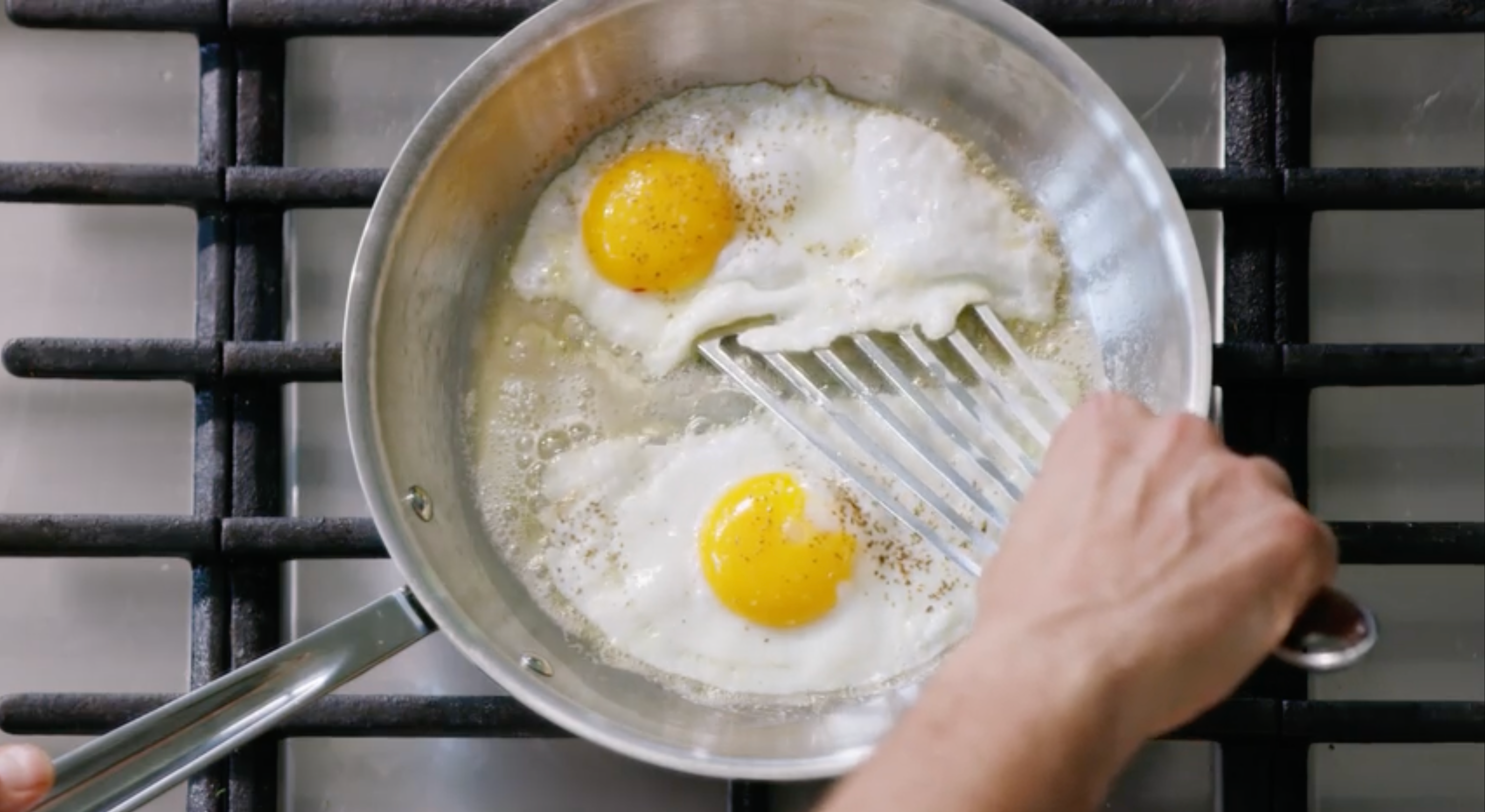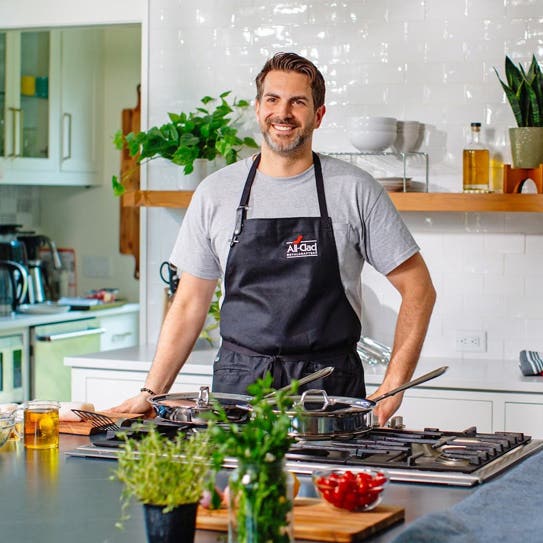Mastering the Art of Cooking Eggs On Stainless Steel

Mastering the Art of Cooking Eggs On Stainless Steel
The thought of cooking eggs on a stainless steel pan might seem intimidating, yet acquiring the appropriate tools and know-how will reveal how surprisingly effortless it can be!
Discover All-Clad Resident Chef Derek's insider techniques to ensure your eggs effortlessly glide off the pan!
| TYPE | MAIN COURSE |
| SERVES | 4 |
| DIFFICULTY | MODERATE |
| PREP TIME | 10 MINUTES |
| COOK TIME | 25 MINUTES |
Ingredients
- 4 - 4 oz Halibut filets
- 1 pint of cherry tomatoes or grape tomatoes if not in season
- 1 shallot sliced thin
- 1 small bulb of fennel sliced thin
- 3 cloves of garlic sliced thin
- 1 teaspoon of salt
- 1/2 teaspoon of fresh cracked black pepper
- 1 teaspoon of capers
- 1/4 cup of pitted black olives halved
- 2 tablespoons of fresh thyme chopped fine
- 1/2 teaspoon of chile flakes
- 1/2 cup of sherry wine
- Juice of 1 lemon ( plus more for garnishing)
- 1 tablespoon of Dijon mustard
- 1/2 cup of parsley chopped fine
- 1/4 cup of basil chopped fine
- 1/4 cup of extra virgin olive oil
- 1/4 Cup of Avocado Oil
Directions
- In a 3 qt Copper Core sauté pan, heat 2 tablespoons of neutral oil over medium heat. Add the tomatoes to the pan and sear alone for 3 minutes.
- Add shallots, fennel, and garlic sautéing for an additional 3 minutes. Season with salt and pepper. The tomatoes should be a bit softened and wilted at this time.
- Add the capers and olives to the pan along with the thyme and Chile flakes and cook 1 minute until very fragrant.
- Pour the sherry wine into the pan to deglaze. Turn up the heat a bit to bring to a simmer then reduce the heat and let cook for 2 to 3 minutes. The wine will reduce by half. Add the lemon juice, and Dijon mustard to the pan and stir to combine the mixture completely. Using a wooden spoon softy open the tomatoes a bit letting their juices into the saucy mixture. Let simmer over low heat for 2 minutes.
- Turn off the heat. Add the herbs and stir to combine. Then add the olive oil to combine the mixture into the thickened sauce.
- Taste and adjust the seasoning if needed. Let rest at room temperature while you cook the fish.
- In a 10 inch Copper Core fry pan, heat 1/4 cup of avocado oil over medium high heat, when hot add the fish filets in 2 batches of two and cook undisturbed for 4 minutes. Nudge gently checking they release from the pan and turn over to sear the other side 3-4 more minutes
- Remove from the heat and place on a serving platter. Squeeze with lemon juice.
- Serve topped with the sauce and fresh greens for a refreshing dish to enjoy.
Pro Tip
This dish is perfect for summer tomato season- a quick preparation when the days are filled with beaches and ocean breezes.


RECIPE BY
All-Clad Resident Chef Derek Finocchiaro
All-Clad’s Resident Chef Derek has been working with flavors and fragrance for his entire career. Finding a path from perfumery to food, Derek competed on numerous amateur cooking shows which led him to the All-Clad Test kitchen. Here he excels in creating new recipes, blogs, video demos, and food photography for our consumers.




